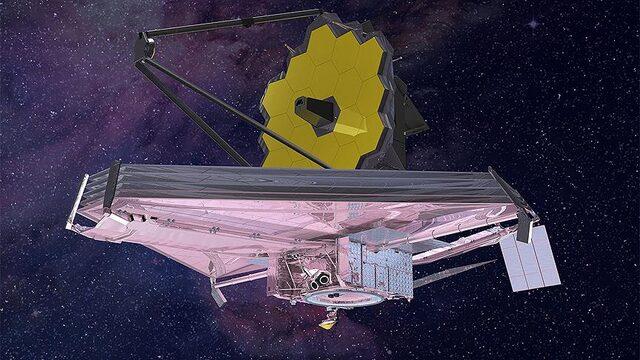It was announced that the hot and rocky planet, which was detected by the James Webb Space Telescope and described as GJ 486 b, is about 30 percent larger than the Earth, so the gravity on its surface is greater.
According to CNN’s report, the researchers think the detected water vapor could indicate that the exoplanet has an atmosphere, and this may be the first atmosphere discovered on a rocky planet.
It has been recorded that GJ 486 b completes one orbit around the star in 1.5 Earth days due to its close position to the sun of the star type called red dwarf.
It was stated that stars belonging to the red dwarf class are cooler than the Sun, and therefore “habitable zones” can be found even in areas closer to the star.
Planets in “habitable zones” in star systems are thought to harbor liquid water to support life.
It was considered that the rocky planets in their orbits could not have atmospheres because normally red dwarf stars emit ultraviolet and X-rays that have the potential to destroy gas layers near the planet’s surface.
GJ 486 MAY HAVE AN ATMOSPHERE DESPITE TEMPERATURES ON THE SURFACE B OF 430 DEGREES
The researchers determined that the surface temperature increased to 430 degrees due to the fact that the planet is very close to the star it is connected to.
It was noted that astronomers assessed that just as only one side of the Moon faces the Earth, only one side of GJ 486 b faces the star, while the other side is always night.
Data from the Webb telescope’s near-infrared spectrograph has detected over GJ 486 b water vapor, despite the extremely high temperatures on its surface, which is inhospitable to life.
The researchers explained that despite its proximity to the star and the very high temperatures at its surface, the detection of water vapor suggests that the planet may have an atmosphere.
GJ 486 B MAY BE THE FIRST ROCK PLANET THOUGHT TO HAVE AN ATMOSPHERE
Although water vapor has been detected on distant gaseous planets such as Jupiter before, scientists have so far been unable to discover an atmosphere on a rocky exoplanet.
It was emphasized that the discovery of the atmosphere around GJ 486 b will be a turning point as it will make the planet similar to planets such as Earth and Mars in the Solar System.
“Water vapor in the atmosphere of a hot, rocky planet could be a major discovery for exoplanet science. But we have to be careful and confident that this water originates from the star,” said Kevin Stevenson, principal investigator of the Webb observing program, and associate professor at the Johns Hopkins University Applied Physics Laboratory in Maryland. ” made the statement.
Researchers can detect the presence of planets in distant star systems only when the planet passes in front of the star. The characteristics of exoplanets are determined by examining data from the Webb telescope.
The research team found that GJ 486 b passed in front of the star twice, and determined that during this transit, the star’s light was water vapor from changes in the planet’s possible atmosphere.
THE FOUND WATER VAPOR MAY ALSO BE TRACES OF WATER ON THE STAR SURFACE
On the other hand, it was noted that more research is needed to determine whether the water vapor detected is precisely in the atmosphere of the planet or is caused by the water vapor present in the star.
Sarah Moran, a University of Arizona academic and study author, said: “We got the data, and it’s almost certain that it’s water. But we can’t yet tell if this water is part of the planet’s atmosphere, that is, whether the planet has an atmosphere, or whether the data is traces of water from the star.” made the statement.
Since water is also found in spots on the Sun’s surface, researchers think there may be much more water in the red dwarf star of GJ 486 b, which is cooler than the Sun.
Ryan MacDonald, who works for NASA at the University of Michigan and co-author of the study, said in a statement, “We did not observe any evidence of the planet passing through any starspots during the transits. However, this does not mean that there are no starspots elsewhere on the star. As the planet passes in front of possible spots, the water in the spots will also appear in the planet’s atmosphere. It can provide data that may look like used the phrases.
It was reported that in the later stages of the research, observations to be made using different instruments in the Webb telescope may reveal whether the detected water vapor originates from the atmosphere of the planet.
Research results have been accepted for publication in The Astrophysical Journal Letters. (AA)
